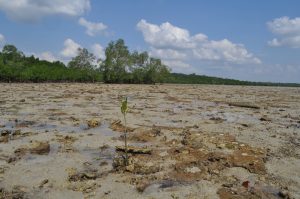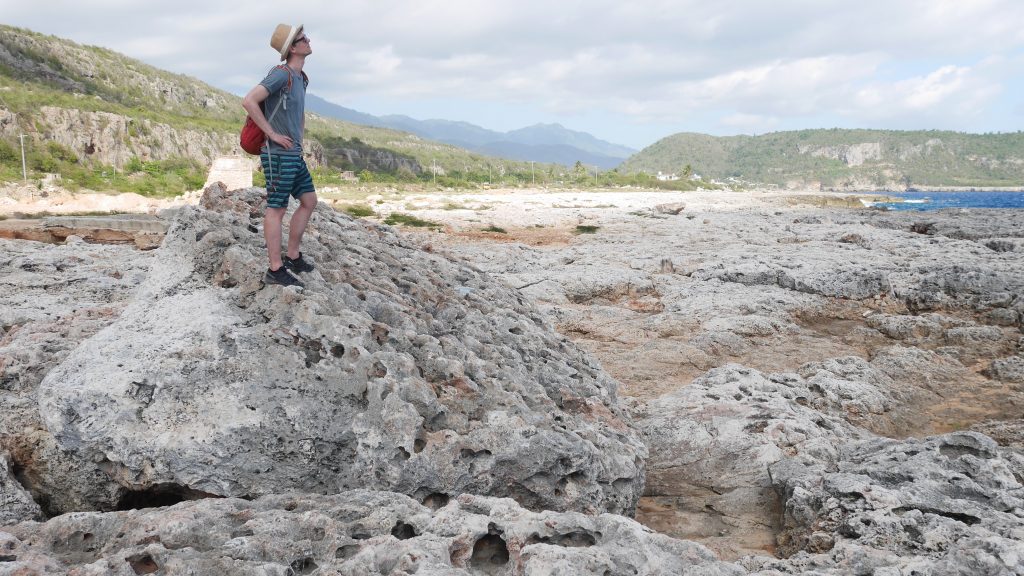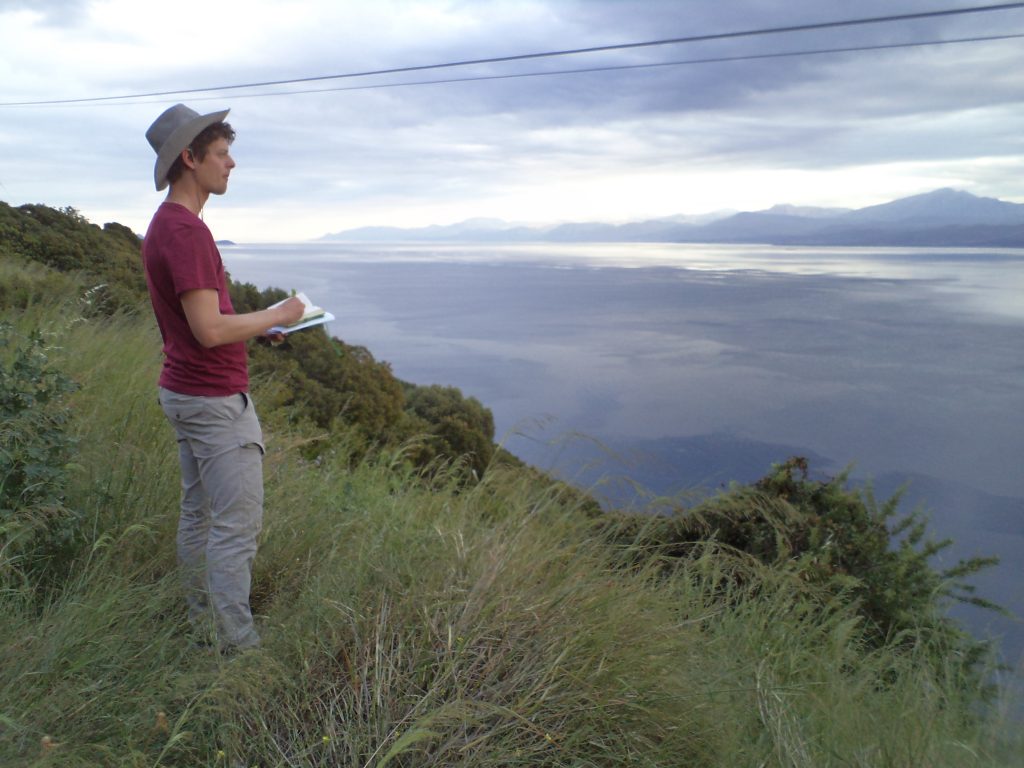Currently: IRD postdoc (2022-2023) – Coastal evolution in Indonesia: Holocene-future interplay between coral reefs and mangroves during sea-level changes – at the Research Centre for Geotechnology (BRIN, Bandung, Indonesia) and ISTerre (Grenoble, France) with Yuda Cahyarini, Tubagus Solihuddin, Rima Rachmayani, Laurent Husson, Kevin Pedoja, Sonny Aribowo and Anne-Morwenn Pastier.
The research project I am currently working on, focuses on several sites around Indonesia, with a specific focus on the NW-Java coast and the nearby Seribu Islands. The aim is to understand how past sea-level variations and vertical tectonic motions (of the past ~15 000 years) have influenced the growth and decay of coral reef and mangrove ecosystems, and what that implies for predicted sea-level rise in the 21st century, both for coral reefs/mangroves and the communities that live near the Indonesian coastlines.

CNES postdoc (2019-2021) – Sea-level reconstruction and Bayesian inversion from high-resolution topography of world-class coral reef terraces – at ISTerre (Grenoble) and ENS Lyon with Laurent Husson, Kevin Pedoja, Sonny Aribowo, Anne-Morwenn Pastier, Denovan Chauveau, Christine Authemayou, Navid Hedjazian and Thomas Bodin.
The research project I worked on in this postdoc, focuses on several sites around the world with well-preserved sequences of coral reef terraces. The aim was to study those sequences using high resolution topography, provided by Pleiades satellite imagery of the CNES, and numerical coral reef modeling, with a Bayesian inversion approach. I’ve studied the sequences in Huon (Papua New Guinea), Barbados, Sumba, Buton, Alor, Kisar (all Indonesia), Cuba, Haiti and Hawaii, and submitted an article on the Huon coral reef terraces. I also published a review article on modelling marine terrace sequences, and have a manuscrupt in preparation on the new terrace inversion approach that we have been developing.

IODP-France postdoc (2018) – Paleoseismological record of the Corinth Rift integrated with Quaternary deformation patterns – at IPGP (Paris) with Nathalie Feuillet, Christian Beck and IODP 381 expedition members
The research project I undertook in 2018 at the Institut de Physique du Globe de Paris (IPGP) was within the framework of International Ocean Drilling Project 381: Corinth Rift Development. It focused on constraining the rift evolutionary history from a paleoseismological perspective. The overall aims were to 1) distinguish earthquake-induced deposits from background sedimentation, 2) establish a chronology and correlate those deposits between different drilling sites, and 3) integrate the earthquake-record with fault slip rates and extension rates to improve our long-term understanding of seismic hazard within the rift. Methods include visual core description, x-ray (micro-)tomography, XRF-scanning, paleomagnetic measurements and radiocarbon dating. As first-author I published an article on the sedimentological signatures of sedimentary event deposits, and one more article – on the 25 ka paleoseismological record contained within the cores – is in an advanced stage of preparation.

PhD thesis (2014-2017) – Plio-Quaternary tectonic changes along the Hellenic Arc (Greece) induced by a propagating plate boundary – at IPGP (Paris) with David Fernández-Blanco, Robin Lacassin, Rolando Armijo, the ITN-ALErT project members and several others
During my 3.5-year PhD at the Institut de Physique du Globe de Paris (IPGP), I investigated when, how, and why vertical tectonic movements along the Hellenic Arc have evolved, using an integrative approach of fieldwork, geomorphology, structural basin analysis, micropaleontology, photogrammetry, cosmogenic nuclide dating and numerical modelling. The high-resolution Digital Elevation Models of several key areas around the arc, which I developed from Pleiades satellite imagery, provided the base for most of my analyses. In the Corinth Rift I improved long-term slip-rate estimates by combining on-and offshore strain markers, and estimated lithospheric scale viscosities from the elastic flexure pattern using finite element modelling. Analysing the Corinth marine terraces with landscape evolution modelling allowed me to explore the effects of sea-level curves on coastal morphology. Combining the results from Corinth with the other studied sites I find that a major change in tectonic regime occurred between 2.5 and 1 Ma along the whole Hellenic Arc, accompanied by rapid accelerations in vertical motions and young upper crustal normal faulting. I attribute this to North Anatolian Fault propagation, causing rift initiation in the Gulf of Corinth and increased plate convergence along the Hellenic subduction zone. As first-author I published two articles: one on the climatic markers of tectonic flexure within the Corinth Rift and one on DEM analysis of marine terraces. Two more articles – on Kythira and E-Crete – are in advanced stages of preparation.

MSc projects (2012-2013) – at Utrecht University (The Netherlands) with Wout Krijgsman, Douwe van Hinsbergen and Marco Maffione and Victoria University (New Zealand) with Gillian Turner
The work of my MSc thesis at the Victoria University of Wellington focused on constructing a Holocene record of geomagnetic secular variation, the results of which have been published in an article I co-authored. The results of an additional MSc project about paleo-spreading directions of Tethyan ocean-floor recorded in Anatolian ophiolites, which I did partly in the Middle East Technical University (Ankara) and partly in Utrecht University, were published in two different articles that I co-authored.
